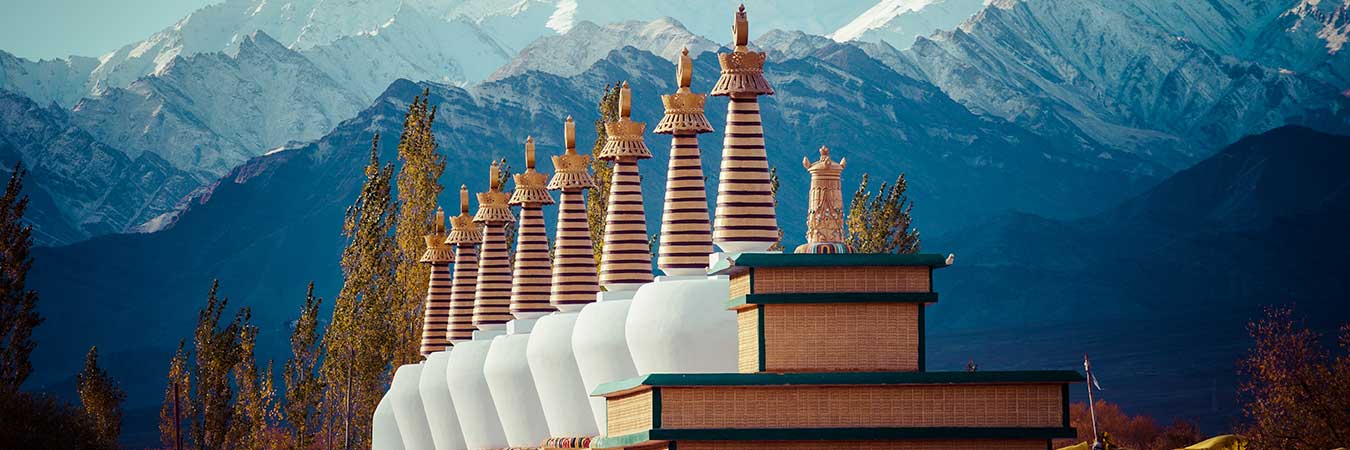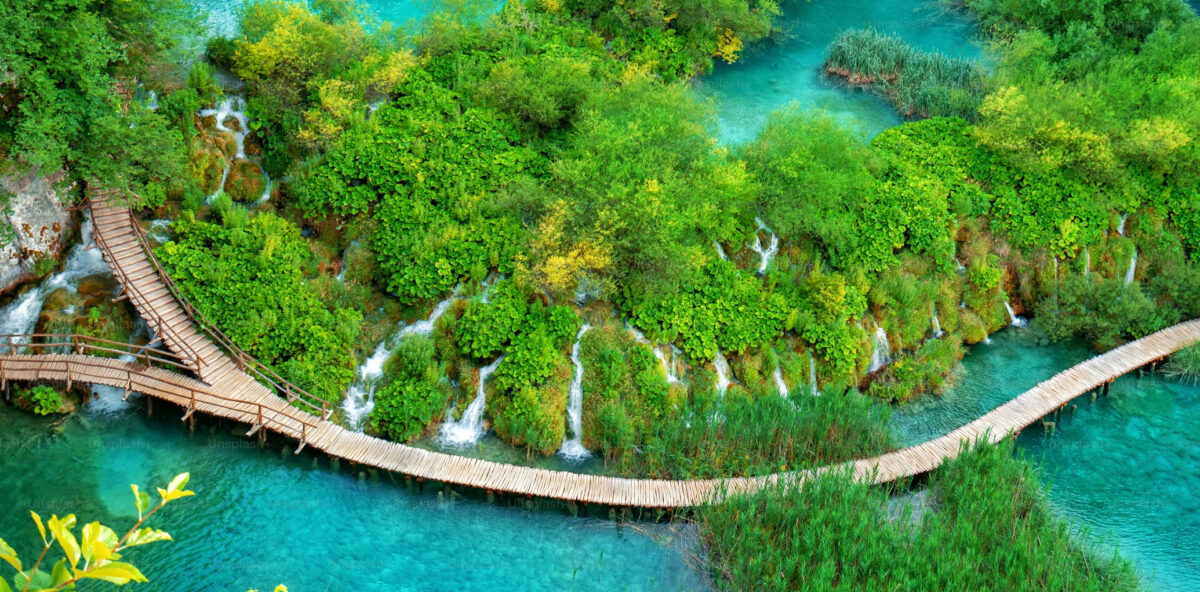Tag: places to visit in ladakh
Top Places to Visit in Ladakh

Located at a height of more than 3,000 meters above the sea level, Ladakh is colloquially referred as, ‘a land of high passes’ in Tibetan language and it is a part of the Jammu and Kashmir state of India. The largest town in Ladakh is Leh. Ladakh as a destination can be depicted as a dreamland for visitors seeking captivating scenic beauty and natural wonders. Visualise those snow-capped Himalayan and Karakoram mountain ranges, deep gorges, verdant landscape, gurgling streams and one can conjure up an overwhelming imagery of a landscape – oozing with mystery and intrigue. Far from the urban cacophony, this place is a whole new world, where you can feel close to yourself amidst tranquil ambience and splendid natural beauty. We have picked up some top places in and around Ladakh, which you should visit to explore the best of this land.
Zanskar valley

Zanskar valley is a sub-district of Kargil, which is flanked by the Himalayan Range of mountains and the Zanskar Mountain Range. Inhabited by about 14,000 people, most of them being Buddhists, this valley is one of the remotest parts of Ladakh. This place was named after the Zanskar river, which flows through the valley. It stays closed for about eight months in a year due to heavy snowfall. During winter, one can reach this valley only on foot through a majestic path, made up of a frozen river. The inhabitants of this valley still follow their age-old traditions and culture, which is one of the main attractions for the tourists. Their livelihood revolves around their cattle, as they continue to live a semi-nomadic life. The town of Padum is the largest town in this valley with a population of around 700 inhabitants and the rest of the region is sprinkled with small villages situated on the highlands.
Pangong Lake

Situated at a height of 4,250 meters on the Changtang plateau in the eastern Ladakh region, Pangong Lake or Pangong Tso is one of the largest brackish lakes in Asia. It is also known as a hollow lake and freezes completely during winter, despite its saline water. Around 160 kilometers away from Ladakh and sprawling over an area of around 100 kilometers across the borders of India and China, this magnificent water reservoir appears like a surreal creation of nature. Due to its brackish water, sunlight creates some awe-inspiring visuals of light. During summer, this lake becomes a temporary home for a number of migratory birds such as the Bar-headed goose and Brahmini ducks. One requires a visiting pass from the deputy commissioner of Leh to visit this lake, as it falls under army control.
Tso Moriri Lake
Situated at an altitude of around 4,500 m, Tso Moriri is a fresh-water lake, which is famous for its pristine and exotic setting. This lake is also located in the Changtang plateau in the eastern Ladakh region like Pangong Lake, and it is entirely within India. Officially, this region is called the Tso Moriri Wetland Conservation Reserve. The road journey from Leh to Tso Moriri Lake offers some remarkable views of an altering landscape from a rugged terrain to verdant scenery. This is also one of the favourite places for bird watchers, who visit this lake during the season of summer when many migratory birds make this place their breeding ground such as: the endangered Black-necked cranes, Bar-headed geese, Brown-headed gulls, Great crested grebe and Ferruginous pochard among others.
Lamayuru Monastery

The Lamayuru monastery is one the most beautiful monasteries in Leh-Ladakh. Located at an altitude of around 3500 meters, this is the oldest Tibetan Buddhist monastery, about 127 Kms from Leh. The barren yet beautiful landscape around this monastery creates an atmosphere of the lunar surface. It is maintained by the Red Hat sect of Buddhism, in which monks wear orange robes and perform old rituals. The most stunning aspect of this monastery are caves, which are carved out of the mountains in an exquisite manner. Other attractions of this monastery are wall paintings, murals, scriptures, and Thangkas.
Kargil
Situated on the banks of the Indus River, Kargil is the second largest town in Ladakh, situated 234 kilometers west of Leh. Blessed with a number of scenic attractions, this sleepy town became famous during the 1999 War between India and Pakistan. In the earlier 19th century, Kargil was a busy town, which had a trade route to and from Afghanistan, China, India and Turkey. Overlooking the snow-capped mountains on all sides, Kargil has an old world charm to it and it is considered as a perfect destination for adventure enthusiasts, who can enjoy trekking and mountaineering here.
Nubra Valley

Located around 140 km from Leh, Nubra Valley is a part of the famous Silk Route. This valley is also known as “the valley of flowers” as it is complemented by some rare and beautiful flowers that fill colours in its lush green landscape. It is a land of tranquil atmosphere and everlasting splendour, overlooking the glaciated peaks of the Karakoram Range. This undefiled place presents an awe-inspiring imagery, which appears as if it is taken from the books on modern art. Two rivers named as Nubra and Shyok that pass through the valley sustain the exotic flora and fauna of this place.
Diskit Monastery

Located 120 kilometers away from Leh, Diskit Monastery is also known as Deskit Gompa or Diskit Gompa. This monastery belongs to the Yellow Hat (Gelugpa) sect of the Tibetan Buddhism and founded by Changzem Tserab Zangpo in the 14th century, which makes it the oldest Gompa in the Nubra valley. The main attraction is a golden Buddha statue, which is 32 meters tall and looks majestic amidst the serene ambience. One can also visit Lachung Temple and Hundur Monastery, which are located nearby. There is a massive prayer hall in this monastery, which is complemented by some stunning images of the guardian deities. Every year in the month of February, a festival is organised in this monastery, which is known as the “Festival of the Scapegoat” and attended by the local people. This festival gives insight into the ancient traditions and rituals of Buddhism.
Magnetic Hill

Located about 30 Kms from Leh towards Kargil, this is one of the most fascinating places in Ladakh. It is a small stretch of road, which is known as “Magnetic Hill” or “Gravity Hill” of Ladakh. This curious natural phenomenon occurs due to the unique layout of this area, which creates an optical illusion of the road being uphill, actually, it is a downhill road. In fact, this hill pulls any vehicle towards it with its magnetic force.
Shanti Stupa
The Shanti Stupa is a Buddhist white-domed stupa on a steep hilltop in Chanspa, at a height of around 4200 meters. It was constructed by a Japanese Buddhist Bhikshu Gyomyo Nakamura in 1991, as a part of the Peace Pagoda Mission. This holy place is not only known for providing a stunning panoramic view of the region, but also for holding the relics of the Buddha at its base, which were preserved by the 14th Dalai Lama. One can savour some amazing views of the sunrise and sunset from this Stupa.
Best time to visit: The best time to visit Ladakh is during the summer season of the region, from June until September. The weather stays clear during this period with an average temperature range during the day is about 20–30°C, but it drops sharply at night. During the months of July and August, trekkers head to Ladakh, when the Manali-Leh and Srinagar-Leh highways are open to vehicles.
By Air: Regular fights to Leh from Delhi, Jammu and Srinagar airports.
By Road: There are two routes. Srinagar to Leh and Manali to Leh.
Srinagar to Leh: The 434-km Srinagar-Leh road. This road stays open from mid-May and November. One can also board the buses of the J&K state road transport corporation.
Manali to Leh: The 473-km Manali-Leh road. Open for traffic from around mid-June to early October. One can also board the buses, operated by the Himachal Pradesh tourism and the J&K SRTC.
Enjoy a gratifying and customised trip to Ladakh with us!





 +1-(765)-586-1210
+1-(765)-586-1210 +44-2030-2689-44
+44-2030-2689-44 +91 124 4361906
+91 124 4361906







 +1-(765)-586-1210
+1-(765)-586-1210 +44-2030-2689-44
+44-2030-2689-44

